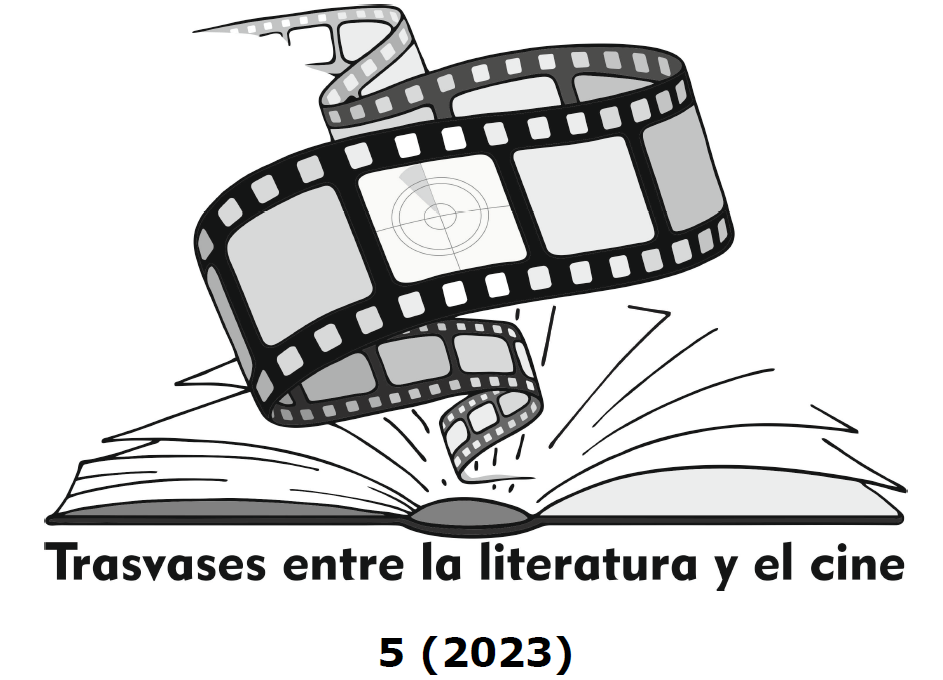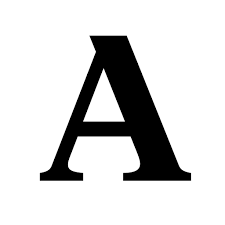Multimediality, Translation and Censorship.
Conflicted Gender Constructs in Estudio Uno's (RTVE) Early-Modern Audiovisual Theatre Adaptions
DOI:
https://doi.org/10.24310/tlc.5.2023.16619Keywords:
theatre, television script, Early Modern, multimediality, translation, censorship, womanAbstract
The main objective of this article proposal is to introduce the academic community the ideas behind the TVTHEAGEN research project: an innovative and ambitious multidisciplinary research work proposal that aims to address the set of Estudio 1 16th and 17th centuries plays adapted to television as a corpus of work. This was a TV program broadcasted throughout almost three decades (1965-19985). A period of time of enormous significance given that it testifies to a period of profound political and social transformations in Spain, linking together three historical moments of great importance: the Franco regime (1965-1969), the pre-transition, which, according to the proposed term by Charles T. Powell, would cover 1969-1975 (Powell, 1993) and the Democratic Transition (1975-1984). Once the television scripts have been collected, there will be three theoretical frameworks from which the textual analysis will be carried out: the translation framework, the multimedia framework, and the gender framework. Thus, the project will analyze the respective translations and adaptations of the original theatrical text to the television script format to see how the motifs and female characters in the works develop in successive staging, paying special attention to the censorship that many of these scripts were subjected to. In other words, to conceive the Estudio 1 television script as a reflection of a concrete and evolving historical moment regarding the treatment of women on stage.
Downloads
Metrics
Publication Facts
Reviewer profiles N/A
Author statements
Indexed in
-
—
- Academic society
- N/A
- Publisher
- Universidad de Málaga
References
Abdel Raouf, Dr. “L'Education des filles au XVIIème siècle d'après le théâtre de Molière et le Traite de Fénelon.” ???? ???? ?????? 56.1 (2020): 3-13.
Aebischer, Pascale, and Kathryn Prince, eds. Performing early modern drama today. Cambridge University Press, 2012.
Baker, Paul, and Giuseppe Balirano, eds. Queering masculinities in language and culture. Springer, 2017.
Bandia, Paul F., and Georges L. Bastin. Charting the Future of Translation History. University of Ottawa Press/Les Presses de l’Université d’Ottawa, 2006.
Barksted, William, et al. Four Jacobean Sex Tragedies. Oxford University Press, USA, 1998.
Bowie, José Antonio Pérez. “Teatro en verso y cine: una relación conflictiva.” Anales de la literatura española contemporánea. Vol. 26. No. 1. Society of Spanish & Spanish-American Studies, 2001.
------------------------------------. “Teatro y cine: un permanente diálogo intermedial.” Arbor 177.699/700 (2004): 573-594.
------------------------------------. “La teatralidad en la pantalla: un ensayo de tipología.” (2010).
Casey, James. Early modern Spain: a social history. Routledge, 2002.
Caughie, John. Television drama: Realism, modernism, and British culture. Oxford University Press, 2000.
Elam, Keir. The semiotics of theatre and drama. Routledge, 2003.
Ellis, John. Visible fictions: Cinema: television: video. Routledge, 2002.
Fairclough, Norman. Critical discourse analysis: The critical study of language. Routledge, 2013.
Falcón, Gaudi Delgado. “Exploring Theatre as a Medium for Change: A Critical Discourse Analysis of Measure for Measure in the Post# MeToo Era.”
Fernández López, Marisa. Comportamientos censores en la literatura infantil y juvenil traducida del inglés en la época franquista: establecimiento de un corpus textual. Servicio Editorial de la Universidad del País Vasco/Euskal Herriko Unibertsitateko Argitalpen Zerbitzua, 2007.
Fernández, Esther. “Lope de Vega en televisión.” Anuario Lope de Vega. Texto, literatura, cultura 24 (2018): 10-37.
Flather, Amanda. Gender and space in early modern England. Vol. 55. Boydell & Brewer, 2007.
Foucault, Michel, and Angèle Kremer-Marietti. L'archéologie du savoir. Vol. 1. Paris: Gallimard, 1969.
Freeman, Matthew, and Renira Rampazzo Gambarato, eds. The Routledge companion to transmedia studies. Abingdon-on-Thames, UK: Routledge, 2019.
Godayol Nogué, Pilar. Tres escritoras censuradas: Simone de Beauvoir, Betty Friedan y Mary McCarthy. Comares, 2017.
Goetschel, Pascale. “Décors parisiens dans Au théâtre ce soir: rituel et stéréotypes.” Societes Representations 1 (2004): 247-272.
Gregor, Keith. “Shakespeare at the Español: Franco and the Construction of a” National” Culture.” (2007).
Groves, Tamar. “Everyday struggles against franco's authoritarian legacy: pedagogical social movements and democracy in Spain.” Journal of Social History 46.2 (2012): 305-334.
Howard, Jean E. “Crossdressing, the theatre, and gender struggle in early modern England.” Shakespeare Quarterly 39.4 (1988): 418-440.
Hutcheon, Linda. A theory of adaptation. Routledge, 2012.
Jaffré, Jean. “THÉÂTRE ET IDÉOLOGIE NOTE SUR LA DRAMATURGIE DE MOLIÈRE.” Littérature (1974): 58-74.
Kress, Gunther. “Multimodal discourse analysis.” The Routledge handbook of discourse analysis. Routledge, 2013. 61-76.
Lazar, Michelle, ed. Feminist critical discourse analysis: Gender, power and ideology in discourse. Springer, 2005.
Martinenche, Ernest. Molière et le théâtre espagnol. Hachette et cie, 1906.
Martín-Quevedo, Juan, Nuria Navarro-Sierra, and Gema-María Gómez-Rodríguez. “Orígenes y desarrollo de las televisiones culturales en Europa. Una comparación entre la Segunda Cadena de TVE, BBC-2 y RTP-2 (1966-1975).” Memoria y Civilización (2021).
Merchán, Eduardo Rodríguez. “Antecedentes, orígenes y evolución de un programa mítico: Estudio 1 de TVE.” Estudios sobre el mensaje periodístico 20 (2014): 267-79.
Merino Álvarez, Raquel. Traducción y censura en España (1939-1985). Estudios sobre corpus TRACE: cine, narrativa, teatro. Prólogo. Bibliografía general. Indices. Servicio Editorial de la Universidad del País Vasco/Euskal Herriko Unibertsitatearen Argitalpen Zerbitzua, 2007a.
------------------------------. “La homosexualidad censurada: estudio sobre corpus de teatro TRACE inglés-español (desde1960).” (2007b).
------------------------------. “Censura, traducción e integración en el teatro de la época franquista: José López Rubio, hombre de teatro y traductor.” Hispanic Research Journal 17.4 (2016): 303-321.
------------------------------. “Traducción y censura: investigaciones sobre la cultura traducida inglés-español (1938-1985).” (2017).
------------------------------, and Olaia Andaluz Pinedo. “Sesenta años de Beckett en España:” Esperando a Godot”, de la censura a la audiodescripción.” (2020).
Mills, Sara. Feminist stylistics. Routledge, 2002.
Monzó, Esther. “La traducción jurídica a través de los géneros: el transgénero y la socialización del traductor en los procesos de enseñanza/aprendizaje.” Discursos: estudos de tradução (2002): 21-36.
Nakayama, Tomoko. Jouer un autre sexe: le travestissement des femmes en homme dans le théâtre en France de 1681 à 1758. Diss. Nantes, 2011.
Piorno, Pilar Ezpeleta. Teatro y traducción: aproximación interdisciplinaria desde la obra de Shakespeare. Ed. Cátedra, 2007.
Powel, Charles T: “La dimensión exterior de la transición española” en Afers Internacionals, 26, 1993, 37-64.
Riera, Jorge Braga. “¿Traducción, adaptación o versión?: maremágnum terminológico en el ámbito de la traducción dramática.” Estudios 1 (2011): 59-72.
Rivas Hernández, Ascensión. “La acción de la censura en siete dramas del siglo XIX.” Anuario de Estudios Filológicos (1997).
Ruiz, José Santaemilia. “1. IRONÍA Y LENGUAJE DRAMÁTICO.” Humor i literatura 6 (2001): 215-225.
Rundle, Christopher. “Translation as an Approach to History.” Translation Studies 5.2 (2012): 232-240.
Santaemilia Ruiz, José. “Género y conflicto discursivo en los personajes cómicos de Etherege, Wycherley Congreve.” (1997).
Schäffner, Christina. “Rethinking transediting.” Meta: journal des traducteurs/Meta: Translators’ journal 57.4 (2012): 866-883.
Scott, Joan Wallach. Gender and the Politics of History. Columbia University Press, 1988.
---------------------------. Gender: A Useful Category of Historical Analysis. Columbia University Press, 1988.
Shubert, Adrian. A social history of modern Spain. Routledge, 2003.
Smith, Clarissa, Feona Attwood, and Brian McNair, eds. The Routledge companion to media, sex and sexuality. Routledge, 2017.
Stathi, Irini. “Inter-semiotic Translation and Transfer Theory in Cinematic/Audiovisual Adaptations of Greek Drama.” International Handbook of Semiotics. Springer, Dordrecht, 2015. 321-338.
Tissier, André. “Le public français face au renouveau théâtral après la seconde guerre mondiale [with Discussion].” Revue d'Histoire littéraire de la France (1977): 957-970.
Villaplana Ruiz, V. “Discursos sociales transmedia del webdoc en España. El caso del Lab de Rtve.” Territorios Transmedia y Narrativas Audiovisuales (2021).
VIRINO, Concepción CASCAJOSA. “Macbeth Catódico. Representaciones de la tragedia en televisión.” Comunicación 5 (2007): 249-263.
Weiss, Gilbert, and Ruth Wodak, eds. Critical discourse analysis. New York, NY: Palgrave Macmillan, 2007.
Downloads
Published
How to Cite
Issue
Section
Categories
License
Copyright (c) 2023 Diego Ernesto Parra Sánchez, Elena Castellano Ortolá

This work is licensed under a Creative Commons Attribution-NonCommercial-ShareAlike 4.0 International License.
All authors published in this journal accept the following copyright terms:
a. Authors retain their authors´ rights (copyright) and grant First Publication Rights to the journal, which whill be published under a the Creative Commons Attribution-NonCommercial-ShareAlike 4.0 International (CC BY-NC-SA 4.0) license. All about this license is available in the following link: <http://creativecommons.org/licenses/by-nc-sa/4.0>
b. Authors may separately establish additional agreements for the non-exclusive distribution of the version of the work published in the journal (e.g. including it in an institutional repository, or publishing it in a book) with an acknowledgement of its initial publication in this journal.
c. Authors are allowed and encouraged to disseminate their work electronically (e.g. in institutional repositories or on their own website) as this can lead to productive exchanges, as well as earlier and more extensive citation of published work.
The author is responsible for obtaining permission from the copyright holder when using copyrighted materials.
This electronic journal is published by University of Málaga (UmaEditorial), thus it is necessary to cite the origin of any partial or total reproduction.








22.png)










